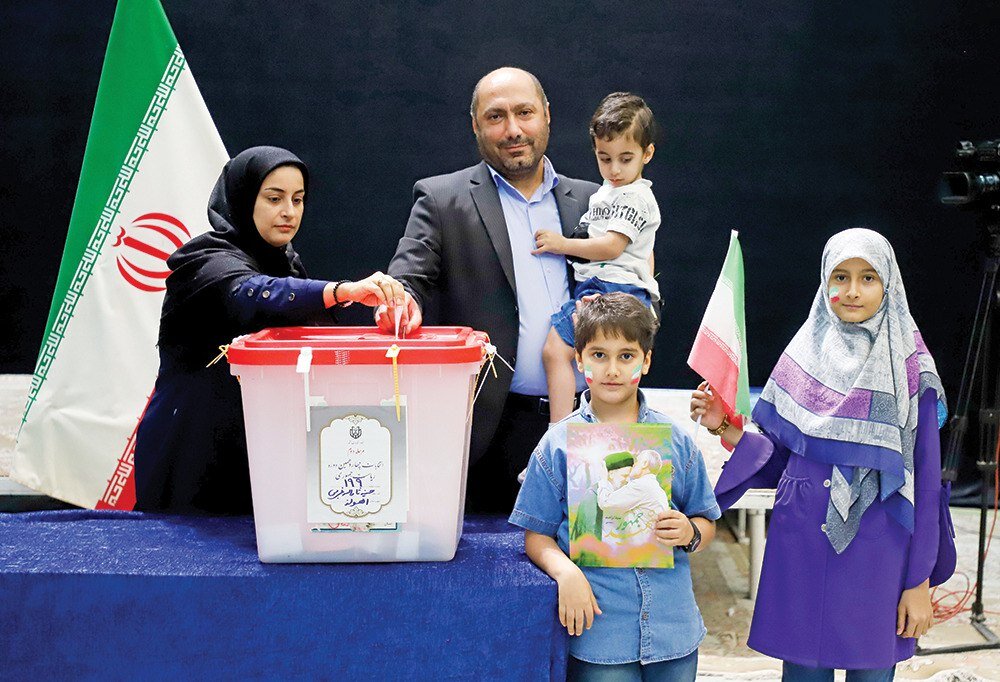50 percent

TEHRAN – On Friday, Iranians went to the polls in the runoff elections to elect a new president, and the latest unofficial reports indicate a participation rate of around 50 percent.
The first round of the elections held on June 28 saw Pezesehkian emerge as the top candidate with over 10.4 million votes, followed closely by conservative Saeed Jalili with 9.5 million ballots cast in his support. The failure of either candidate to secure a majority in the first round led them to a runoff.
Both hopefuls were filmed casting their ballots in the capital Tehran. Pezeshkian, accompanied by former Foreign Minister Mohammad Javad Zarif, voted at a girls' high school in western Tehran, while Jalili voted at the grand mosque in Qarchak, southeast of the capital.
Various important figures, including Leader of the Islamic Revolution Ayatollah Seyyed Ali Khamenei, Chief of Staff of the Iranian Armed Forces Major General Mohammad Baqeri, and head of the Guardian Council Ahmad Jannati also cast their votes.
The presidential elections were called a year early following the sudden passing of President Ebrahim Raisi, who lost his life in a helicopter crash in Iran's east Azerbaijan Province on May 19th. He was expected to be able to secure a second term in office.
Voter participation increases in second round
The first round of the race recorded a 10 percent decrease in voter turnout compared to the 2021 presidential elections, with only 40 percent of the eligible voters showing up at the ballot box. The decline in voter participation was attributed to the disillusionment of traditional reformist voters, whose trust had been eroded by the perceived shortcomings of Hassan Rouhani’s administration.
It is, however, believed that many of the traditional reformist supporters who stayed away from the ballot box on June 28 decided to take part in the second round of the race.
“The voting process started smoothly at 8 am. Reports suggest a higher turnout compared to the first round of elections,” said the spokesman for Iran’s election headquarters before issuing a warning to the two candidates and their campaign offices. “We ask that candidates and their supporters refrain from announcing victory before the official announcement of the results.”
A senior Guardian Council member observing a polling station in the capital also confirmed that at least in the early hours of voting, more people showed up at the ballot box compared to last Friday. “We have set up electronic voting systems everywhere which makes the voting process faster. People are participating smoothly and no incidents or disturbances have been reported so far,” he added.
The two presidential debates held in the past week, are also thought to have boosted voter enthusiasm due to the unprecedented assertiveness and straightforwardness of the televised duels.
“I decided to vote after watching the debates. I want to vote for Jalili because I think he cares more about low-income families. He is one of us and is determined to fight corruption,” a woman in the suburbs of Tehran told IRIB reporters.
Some supporters of Pezeshkian said they chose to vote for him for his “better-crafted” economic plans. “Our country's economy hinges on our factories. I believe Pezeshkian's economic team can revitalize different industries. We also need to reconsider these energy subsidies, as they are ultimately harming our economy,” a young man who said he is attempting to start his own business said to Iranian reporters.
The main difference between the two hopefuls seems to lie in their economic policies. Pezeshkian favors eliminating energy subsidies and a more liberal economic system, while Jalili supports maintaining subsidies and government intervention in the market when necessary.
Despite their differences, Pezeshkian and Jalili seem to share a common vision for Iran's foreign policy. They have both said that they are planning to work towards the termination of U.S. sanctions while pursuing closer ties with non-Western countries. Both have also praised the Axis of Resistance, saying Iran should continue to back resistance forces in the region.
At the time of writing this article, it is still unclear who would take office in Tehran’s Pasteur Street. However, what’s for certain is that whoever emerges victorious in the Iranian presidential election, will face the task of governing a diverse population with a wide range of political and social views.
Leave a Comment